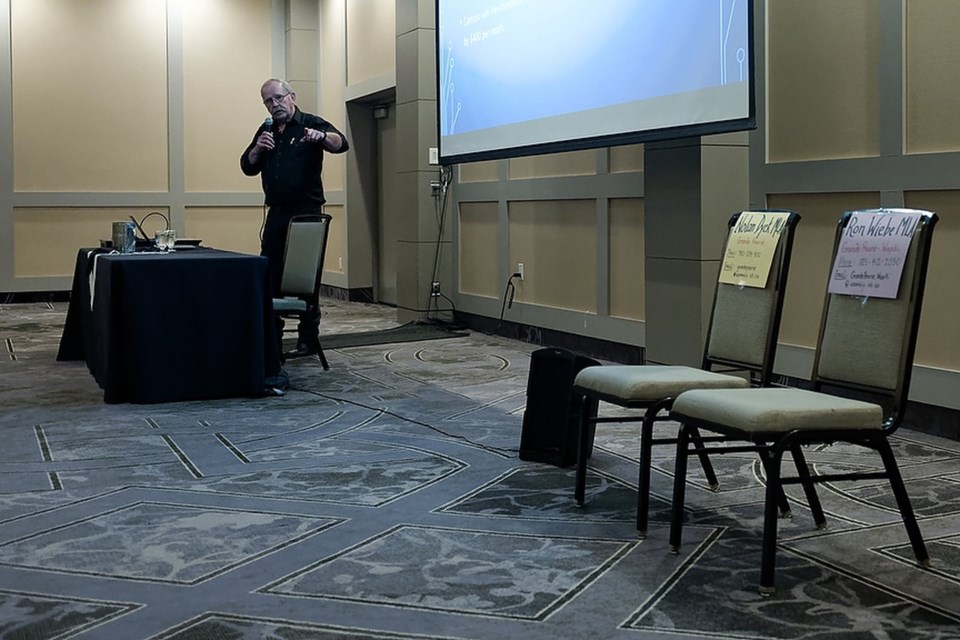The province is seeking feedback on its Alberta Disability Assistance Program (ADAP) through an online survey and a series of telephone town halls.
The new program is expected to be offered alongside the current Assured Income for the Severely Handicapped (AISH) program; still, critics say it may leave people with disabilities in poverty.
“Inclusion Grande Prairie is disappointed to see once again that the province has decided to continue the casual cruelty of working to keep people with disabilities in poverty,” said Keith Moore, Inclusion Grande Prairie president.
The province says its public engagement will focus on five topics: Program eligibility; applications, adjudication and appeals; benefits, income and asset exemptions; employment supports and expectations; and client transitions.
In January 2025, the province announced its plans for ADAP, saying it will allow those currently utilizing AISH to earn a higher income while also receiving benefits.
Inclusion Grande Prairie hosted a town hall in May hoping to have the ear of local MLAs Nolan Dyck and Ron Wiebe, neither of whom attended.
The event included current AISH users who have concerns about the lack of information on ADAP, which the province says it plans to launch in July 2026.
The province says that information on the benefit rates and earned income exemptions for ADAP is still to be determined, but a discussion guide for the current survey offers some insights.
The guide says the province is proposing for July 2026, AISH clients will receive a maximum allowance of $1,940 and ADAP clients would receive a max of $1,740.
“The proposed maximum ADAP rate is higher than most other provinces and $200 lower than the maximum AISH rate, reflecting ADAP clients’ greater opportunity to supplement income through employment as compared to AISH clients,” reads the guide.
Under the AISH program changes proposed for next year, clients will have fewer income exemptions as the program will primarily support individuals who cannot work, while ADAP will offer more employment income exemptions for those who are working.
Currently, AISH clients can work, but their income is deducted from their monthly living allowance of about $1,900.
An issue that disability advocates cite is that those utilizing AISH are also being deducted for accessing federal programs such as the Canada Disability Benefit (CDB) which could provide up to $200 a month.
“We know that they have the plan in place to claw back the Canadian Disability Benefit, thereby reducing the AISH benefit to $1,701 per month,” said Moore. “Now, with the ADAP program, they intend to reduce the benefit to $1,740 per month and assume there will be a clawback of any federal assistance for this program as well.”
Inclusion Alberta says it believes ADAP and the proposed changes will worsen the lives of those currently on AISH, leaving its clients below Canada’s poverty line.
“This follows two earlier blows: Clawback of the $200 CDB and a $220 per month rent hike for AISH tenants in Community Housing,” says Inclusion Alberta in a media release.
In Grande Prairie at the UCP town hall in June, Premier Danielle Smith was asked why the province is deducting benefits such as the CDB from AISH clients when they are already at a poverty level of funding.
Smith said the province has been lobbying the feds for CDB to ensure it pays its share of disability programs.
“Other provinces are $500 less than us, and we have to make sure that we do not continue to have higher and higher benefits from other provinces, because what we're observing is that people are coming here just to take advantage of the higher benefits,” Smith said.
One case study says a single person on AISH and not currently working is earning about $1,940 monthly; if they were to receive ADAP, their income would increase to $3,058 monthly.
The province says ADAP would provide the person with employment support that would help lead the person to permanent employment of 24 hours per week at minimum wage, which would earn them $1,492 a month in wages and $1,566 from ADAP.
“Someone with employment income of $1,492 per month would actually have $164 less on ADAP than with the current earnings exemptions available through AISH,” says Inclusion Alberta in its media release.
“To be better off on ADAP, an individual needs to earn $25,680 per year from employment —about 33 hours per week at minimum wage.
“The vast majority of adults with disabilities will be worse off by $200 per month."
Trish Bowman, Inclusion Alberta CEO, says the province is not addressing the problems faced by current AISH clients.
“There is nothing proposed here that will address complex and deep-rooted systemic barriers and materially change the longstanding 80 per cent unemployment rate for adults with intellectual disabilities,” she said.
“This is simply going to drive Albertans with disabilities deeper into poverty and despair.”
Inclusion Alberta says it wants the province to redesign ADAP, before potentially plunging those with disabilities into poverty.
The report says that determining who will remain on AISH and who will be eligible for ADAP will be determined by their ability to work by client and their medical professional.
Inclusion Grande Prairie notes the requirement is adding a strain to the medical system and tying up physician time with additional paperwork.
“This is a tremendous waste of medical expertise in order for the government to further keep the disability community in poverty,” says Inclusion Grande Prairie in a media release.
Public input
The province’s online ADAP engagement survey is open until Sept. 12 at alberta.ca/alberta-disability-assistance-program-engagement.
Public telephone town halls will provide the public with additional information about the province and answer questions, with dates and times to be shared on social media and at alberta.ca/alberta-disability-assistance-program-engagement.
The province intends to engage in roundtable sessions with disability service providers and advocacy organizations in early September.




